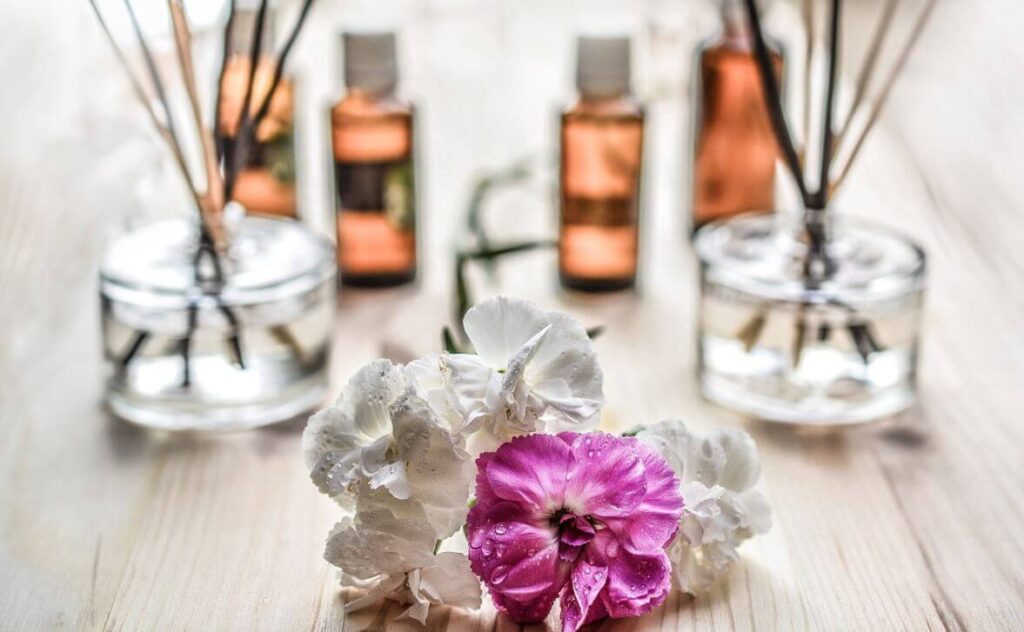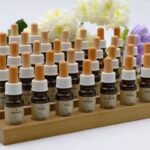Continuing my cliffnotes on classical homeopath Mary Aspinwall’s free Homeopathy course for beginners, we will consider how to practically apply Homeopathy’s two laws – the Law of Similars and the Law of the minimal dose. We will also look at how remedies are actually made.
You probably know the adage “Less is more.” Nowhere is it more true than in Homeopathy’s microdose remedies, which come in many different potencies, such as 3x, 6x, 12x, 6c, 12c, 30c, 200c, 1M, 10M.
The letter-number combination tells how many steps of dilution were performed to achieve a particular potency.
The most frequently used homeopathic potencies are decimal (from the Latin word for ten, represented by X or sometimes D) and centessimal (from the Latin word for one hundred, represented with C).

The Ullmans (2010) explain that in a decimal preparation, one part of the original “mother tincture” of the substance, which is prepared in a specific and standardized way, is mixed with nine parts of water or ethanol alcohol (a “D” or “X” potency). In a 6X (also called D6) potency, which is widely available in pharmacies or health food stores, one part of the 1X has been mixed again with nine parts of water or alcohol, and this process has been repeated a total of six times. Each time a dilution is made, the substance is vigorously shaken 10 times in order to distribute the material thoroughly and “dynamize” it. Researchers have found that this shaking (called succussion) is an essential component in creating biologically active samples. Scientific techniques such as calorimetry (measuring the amount of heat given off by a sample), spectroscopy (measuring how a substance absorbs, emits or scatters electromagnetic radiation) and thermoluminescence (the amount of light produced by a sample when it is heated (due to the release of stored energy) prove that there are physical differences between homeopathically prepared samples and control samples (such as plain water or other solvents).
In a centesimal preparation, 1 part of the original substance is mixed with 99 parts of water or alcohol to form a “1C” medicine. This process is repeated a number of times. By the time the potency of 30C is reached, the remedy has been succussed three hundred times (30×10). 200C is even more diluted, but more succussed (10×200=2000) and therefore more potent and far-reaching. Each time the medicine is diluted and shaken, it actually becomes stronger, rather than weaker. Of course, this is a rather time-consuming process, and most pharmacies today make the higher potencies with a machine, rather than by hand. This is also the reason higher potencies cost more.
According to the Ullmans (2010), potencies of 30C or lower are called low-potency remedies or medicines, and potencies of 200C or higher are considered high-potency medicines. Lay people self-treating with Homeopathy often use the decimal potencies, such as 6X, or, from the centesimal scale, 6C, 12C, or 30C medicines. The lower the potency, the more frequently the medicine typically needs to be readministered. 30c is a safe potency for anyone to use and it’s great for first aid and minor illnesses. Professional homeopaths most often use 30C (diluted 30 times), 200C (diluted 200 times), 1M (1000 dilutions), and 10M (10,000 dilutions). A single dose of a high-potency medicine may last for weeks or months, occasionally for years.
Dilutions of various strengths are inoculated onto sugar pellets. Most home medicine kits contain 30C potency pellets. The reason is that it is a high enough potency to last for a day or so, but low enough to be used comfortably by those with very little knowledge of Homeopathy. Self-treatment can be quite effective for first aid and acute conditions
Administering the homeopathic remedy
In order to make it easy for us beginners, Mary recommends the following protocol that uses the simple “plussing technique”. Here it is:
• Once a matching remedy has been identified, give ONE DOSE (a dry 30C pillule) of the chosen remedy under the tongue (“sublingually”), preferably while avoiding certain “antidoting factors” like coffee, aromatics such as eucalyptus, camphor, and menthol and even electric blankets. But if they cannot be avoided, take the remedy anyway. 200C may be needed in particularly intense situations or illnesses, such as severe injuries, childbirth and post-partum, as the effect will last longer.
• Then carefully observe the response to this dose (in Mary’s words, “continue to listen to the information your body gives in response to the remedy”.)
Homeopathic treatment is meant to be a sort of conversation with your body’s vital force. Apparently some people think there is something esoteric about believing in the body’s vital force. Well, what do you think is responsible for healing that cut in your knee? It will heal even if you don’t go to the doctor.
Mary warns that in response to the remedy symptoms may sometimes worsen a little at the start. This is called a “healing reaction”, and nothing to be worried about. Soon after that there will usually be clear improvements. Mary advises to avoid any routine repetitions to get the best results.
• BUT: If you see the improvement stall or symptoms that were better get worse again, then repeat the remedy in a plussed, liquid dose. You can easily prepare this “wet dose” by dissolving one 30C pillule in a small glass bottle of filtered water filled two thirds (leave room for the liquid to agitate), and then bashing the bottom of the bottle against the palm of your hand ten times to make it a little more potent. Give a couple drops of this liquid under the tongue.
• Wait and carefully observe again.
Mary’s experience is that some people only do well on dry doses, while others usually do better on wet doses. It’s a matter of experimenting to find out what suits a particular person best.
• If the wet dose worked for a while, but symptoms are once again returning, simply succuss (bash the bottle in your hand) again ten times, and give another drop or two. Wait and observe.
• If that did not work, you can try succussing 100 times. Give a drop, wait and observe.
• If this worked, but symptoms returned, repeat the last step (succussing 100 times).
• BUT: If the last step did not work, it is time to move up to a 200C potency, using the same series of steps as outlined above with the 30C.
As a general rule, in the case of intense situations and illnesses, the response to a correctly-matched remedy will be fast. For less intense situations and illnesses with a slower onset, remedies will take longer to act. Therefore you must match the pace of your repetitions to the pace of the situation.
• If you do not notice any improvement, or very little improvement after the first 5 doses, go back to square one to find a more suitable remedy. Be sure to take your symptoms afresh – you may have developed new symptoms, or you may have left something out or overlooked an important clue.
Mary warns about much misinformation relating to dosage and repetition of homeopathic medicines that can currently often be found both on remedy containers and in magazine articles and self-help books. She says, “Ignore any instructions that asks you to routinely repeat a homeopathic medicine at set intervals. Instead remember this simple common-sense rule: If it ain’t broke, don’t fix it!”
Mary gives some practical advice on making wet remedies last longer. Dry pellets actually last indefinitely (in spite of any expiry dates on them, which are there by law). But solutions prepared from them will eventually go bad. To keep them useful for as long as possible, Mary recommends sterilizing the glass container with boiling water. Any sized container can be used, but a small glass bottle with a pipette seems the most handy. Make sure the pipette is also sterilized with the hot water both inside and out. The wet remedy will last 2-3 weeks if stored in a cool, dry place. Just check its freshness by smelling it before administering it. Or hold it up to the light and do a visual check. Throw it away if it smells sour or strange, or looks cloudy.
The second way to make “wet remedies” last longer is to dissolve the pellet in a 1:4 vodka to water solution (20{249cced840fdf7e7768cbaaa7c24de3a410ad330beb842934b571eecfacf7b94} alcohol). Of course, this is not recommended for children.
Repotentization
Homeopathic practitioner Christina Mueller (2017) explains how to “repotentize” a remedy to increase its effect:
“After 10 doses (more or less) of any remedy in C or X potency, you should “repotentize” the remedy for further effectiveness. Many times you’ll know it’s time to repotentize because 1) the remedy stops acting or 2) the symptoms begin to get worse for no other explainable reason.
To repotentize a homeopathic remedy in C potency, dump the contents of the bottle into the sink, a trash can or outside and shake the bottle hard to remove all the water, leaving approximately 1 drop in the bottle. Then add 99 drops of distilled water and succuss the bottle 100 times. You can then fill up the bottle with more water and alcohol (if desired), succuss 10 times and take then next dose. You have just raised it by 1C.
To repotentize an X potency homeopathic remedy, dump the contents of the bottle into the sink, a trash can or outside and shake the bottle hard to remove all the water, leaving approximately 1 drop in the bottle. Then add 10 drops of distilled water and succuss the bottle 10 times. You can then fill up the bottle with more water and alcohol (if desired), succuss 10 times and take then next dose. You have just raised it by 1X.”
I recently heard a homeopathic doctor say that if only you can read, you can make homeopathic remedies yourself. After all, Hahnemann described the process in his book, the “Organon”, giving clear instructions, which continue to be followed today. And you already know the basic techniques required, namely dilution and succussion.
Sources:
Aspinwall, M. (n.d.). Mary’s FREE Homeopathy Course. Retrieved on Feb 12th, 2020 from https://maryaspinwall.com/
Mueller, C. (2017). Tips for using homeopathic remedies at home – repotentizing & succussing. Retrieved on Feb 13th, 2020 from https://homeopathicassociates.com/
Shalts, E. (2005). The American Institute of Homeopathy Handbook for Parents A Guide to Healthy Treatment for Everything from Colds and Allergies to ADHD, Obesity, and Depression. California: Jossey-Bass
Society of Homeopaths. (2020). Dilute medicines. Retrieved on Feb 14th, 2020 from
Ullman, R. & Reichenberg-Ullman, J. (2010). Demystifying the Implausible. Retrieved on Feb 14th, 2020 from https://www.townsendletter.com/



